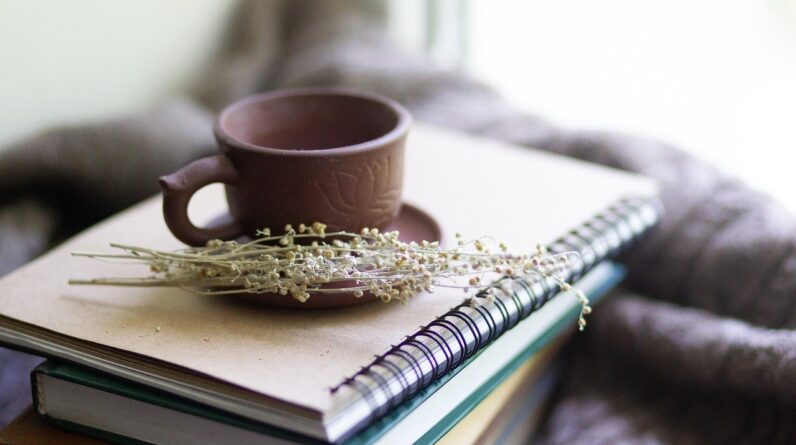
In our article, we will explore the benefits of mindfulness and stress reduction techniques in promoting overall health and well-being. By incorporating mindfulness practices such as meditation, deep breathing exercises, and yoga into our daily routine, we can effectively manage stress levels and improve mental clarity. These techniques have been shown to reduce anxiety, lower blood pressure, and enhance overall mood. Join us as we delve into the world of mindfulness and discover how it can positively impact our physical and mental health.
Have you ever found yourself feeling overwhelmed, anxious, or stressed out? In today’s fast-paced world, it’s easy to get caught up in the hustle and bustle of daily life, leading to increased levels of stress and anxiety. But what if there was a way to combat these negative feelings and improve your overall well-being? This is where mindfulness and stress reduction techniques come into play. In this article, we will explore the benefits of mindfulness practices and various stress reduction techniques that can help you lead a happier and healthier life.

This image is property of pixabay.com.
Understanding Mindfulness
Mindfulness is the practice of being fully present and engaged in the moment, without judgment or attachment to thoughts or emotions. It involves paying attention to the here and now, rather than dwelling on the past or worrying about the future. By cultivating mindfulness, we can bring awareness to our thoughts, feelings, and bodily sensations, allowing us to respond to situations with clarity and calmness.
Embracing mindfulness can help us develop a greater sense of self-awareness and emotional intelligence, leading to improved mental and physical well-being. By incorporating mindfulness techniques into our daily lives, we can reduce stress, enhance focus and concentration, and cultivate a greater sense of peace and contentment.
Benefits of Mindfulness
- Reduces stress and anxiety levels
- Improves focus and concentration
- Enhances emotional regulation
- Promotes a sense of calm and well-being
- Boosts overall mental and physical health
By incorporating mindfulness practices into our daily routine, we can experience these benefits firsthand and live a more balanced and fulfilling life.
Mindfulness Techniques
There are various mindfulness techniques that we can incorporate into our daily lives to cultivate a greater sense of mindfulness and inner peace. These techniques are simple yet effective and can be practiced anywhere, at any time.
Mindful Breathing
One of the most fundamental mindfulness practices is mindful breathing. By focusing on our breath, we can anchor ourselves in the present moment and bring our attention back to the here and now. To practice mindful breathing, find a quiet space where you can sit or lie down comfortably. Close your eyes and take deep, slow breaths, focusing on the sensation of the air entering and leaving your body. Notice how your body rises and falls with each breath, and let go of any distracting thoughts or worries.
Body Scan Meditation
Body scan meditation is another powerful mindfulness technique that involves bringing attention to different parts of the body, from head to toe. Start by lying down in a comfortable position and close your eyes. Begin by focusing on your breath, then slowly shift your attention to your toes. Notice any sensations, tension, or discomfort in that area, then gradually move your awareness up through your body, scanning each body part from toes to head. This practice can help you release physical tension and bring awareness to your body’s signals.
Mindful Eating
Mindful eating is the practice of being fully present and aware while eating, without distractions or judgments. To practice mindful eating, choose a meal or snack to focus on and sit down at a table without any distractions. Before you take a bite, take a moment to appreciate the colors, textures, and aromas of the food in front of you. Chew slowly and savor each bite, paying attention to the taste, sensation, and feelings that arise. By bringing mindfulness to your eating habits, you can cultivate a greater sense of appreciation and satisfaction with your food.
Walking Meditation
Walking meditation is a mindfulness practice that involves walking slowly and intentionally, focusing on each step and breath. Find a quiet place to walk, either indoors or outdoors, and begin by standing still and taking a few deep breaths. Start walking at a slow, steady pace, paying attention to the sensation of your feet touching the ground. Notice the movement of your body as you walk, the sights and sounds around you, and the feelings that arise. Walking meditation can help you ground yourself in the present moment and cultivate a sense of peace and calmness.

This image is property of pixabay.com.
Stress Reduction Techniques
In addition to mindfulness practices, there are various stress reduction techniques that we can incorporate into our daily routine to manage stress and anxiety effectively. These techniques are simple yet powerful and can help us cope with the demands of daily life more effectively.
Progressive Muscle Relaxation
Progressive muscle relaxation is a stress reduction technique that involves tensing and releasing different muscle groups in the body to promote relaxation and reduce tension. To practice progressive muscle relaxation, find a quiet space where you can sit or lie down comfortably. Start by tensing a specific muscle group, such as your hands or shoulders, for a few seconds, then release and relax the muscles completely. Move on to the next muscle group and repeat the process, working your way through the entire body. This practice can help release physical tension and calm the mind.
Deep Breathing Exercises
Deep breathing exercises are a simple yet effective way to reduce stress and promote relaxation. By taking slow, deep breaths, we can activate the body’s natural relaxation response and calm the nervous system. To practice deep breathing, find a comfortable position and take a deep breath in through your nose, filling your lungs with air. Hold your breath for a few seconds, then exhale slowly through your mouth, releasing any tension or stress. Repeat this process several times, focusing on the rhythm and depth of your breath. Deep breathing exercises can help reduce anxiety, improve focus, and enhance overall well-being.
Visualization Techniques
Visualization techniques involve imagining a peaceful or calming scene to promote relaxation and reduce stress. To practice visualization, find a quiet space where you can sit or lie down comfortably. Close your eyes and imagine yourself in a serene and tranquil setting, such as a beach, forest, or garden. Use all your senses to bring the scene to life, focusing on the sights, sounds, and sensations around you. Allow yourself to immerse in the experience fully, letting go of any tension or worries. Visualization techniques can help you escape from the stresses of daily life and cultivate a greater sense of peace and relaxation.
Journaling
Journaling is a powerful stress reduction technique that involves writing down your thoughts, feelings, and experiences to gain insight and perspective. By putting our thoughts on paper, we can release pent-up emotions, clarify our thoughts, and create a sense of order and structure. To practice journaling, set aside a few minutes each day to write down your thoughts and reflections on paper. You can write about your day, express gratitude, or explore your emotions and beliefs. Journaling can help you process stress and anxiety more effectively, leading to improved mental and emotional well-being.

This image is property of pixabay.com.
Integrating Mindfulness and Stress Reduction Techniques
To experience the full benefits of mindfulness and stress reduction techniques, it’s essential to integrate these practices into your daily routine consistently. By making mindfulness a part of your lifestyle, you can reduce stress, improve focus, and enhance your overall well-being. Here are some tips for integrating mindfulness and stress reduction techniques into your daily life:
Create a Daily Routine
Set aside dedicated time each day to practice mindfulness and stress reduction techniques. Whether it’s in the morning, during lunch, or before bedtime, find a time that works for you and stick to a consistent routine. By establishing a regular practice, you can make these techniques a habit and reap the benefits over time.
Start Small and Be Patient
If you’re new to mindfulness practices or stress reduction techniques, start small and gradually build up your practice. Begin with just a few minutes of meditation or deep breathing each day and gradually increase the duration as you become more comfortable. Remember that the key is consistency, patience, and self-compassion as you navigate your mindfulness journey.
Find What Works for You
Experiment with different mindfulness and stress reduction techniques to find what resonates with you. Whether it’s mindful breathing, body scan meditation, or visualization exercises, explore various practices and see which ones feel most effective and enjoyable for you. Remember that mindfulness is a personal journey, and there’s no one-size-fits-all approach.
Practice Mindfulness in Everyday Activities
Incorporate mindfulness into your everyday activities by bringing awareness to your actions, thoughts, and emotions. Whether you’re eating, walking, or interacting with others, try to stay present and engaged in the moment. By practicing mindfulness throughout the day, you can cultivate a greater sense of awareness and presence in your daily life.
Seek Support and Guidance
If you’re struggling to integrate mindfulness and stress reduction techniques into your daily routine, consider seeking support and guidance from a qualified professional or therapist. A mindfulness coach, counselor, or teacher can provide you with the tools, resources, and guidance you need to develop a consistent mindfulness practice and manage stress effectively.
In conclusion, mindfulness and stress reduction techniques are powerful tools that can help us combat stress, anxiety, and overwhelm in today’s fast-paced world. By cultivating mindfulness and integrating stress reduction techniques into our daily lives, we can improve our mental and emotional well-being, reduce stress, and lead a happier and healthier life. Remember that mindfulness is a journey, and it’s essential to practice regularly, be patient with yourself, and seek support when needed. By making mindfulness a priority, you can experience a greater sense of peace, balance, and fulfillment in all aspects of your life.






